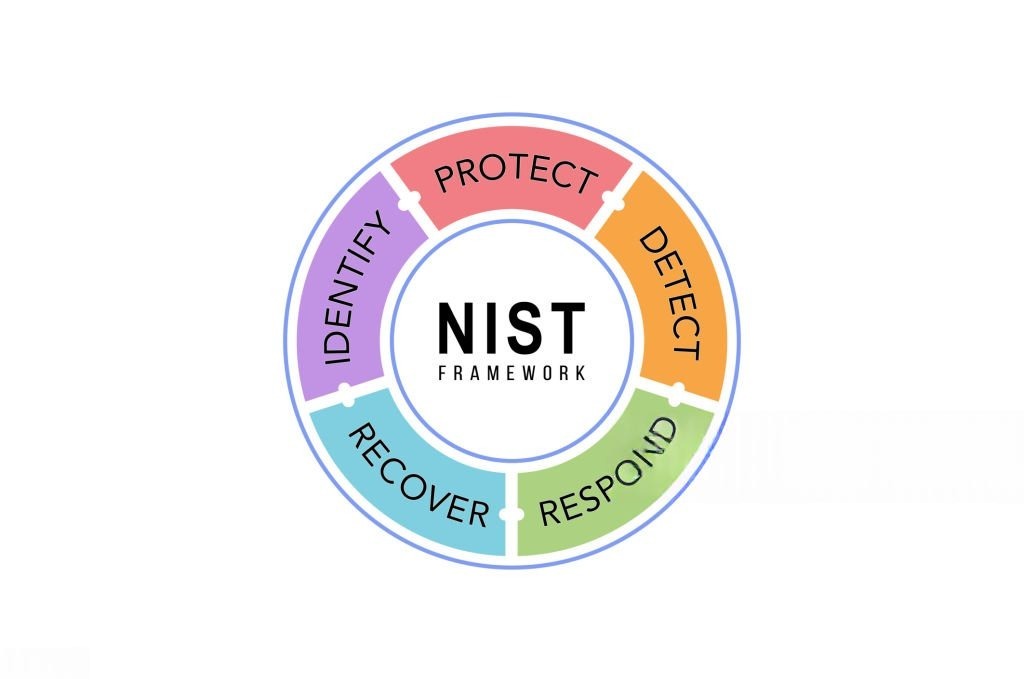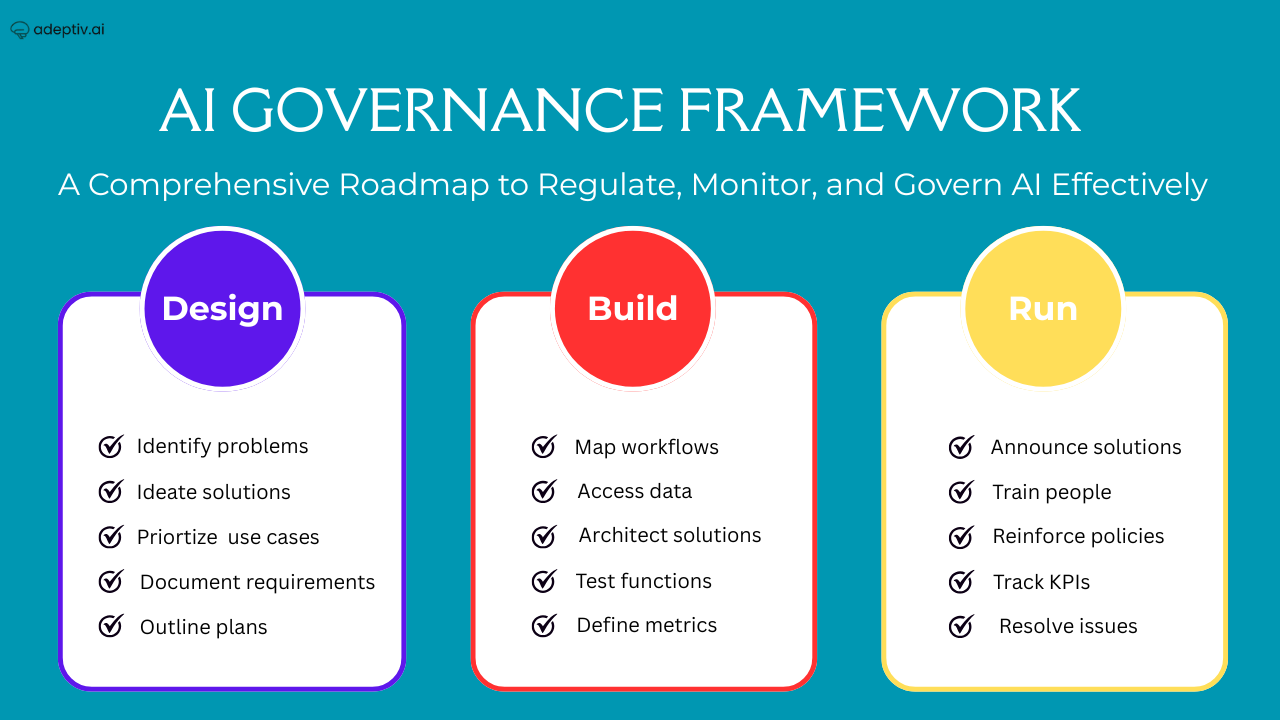At a Glance
- What is the NIST AI Risk Framework, and why does it matter now
- Core principles of trustworthy AI under NIST (validity, security, transparency, etc.)
- A step-by-step approach to implementing NIST AI risk management
- The business value of aligning with NIST — trust, compliance, resilience
- FAQs to clarify common questions on NIST, AI governance, and responsible AI
Introduction
In today’s fast-evolving AI landscape, managing risk is no longer optional — it’s essential. The NIST AI Risk Framework (AI RMF 1.0), released in January 2023, provides voluntary yet robust guidance for designing, deploying, and governing trustworthy AI systems.
As organizations rush to adopt AI, gaps in compliance, ethics, or security can cause severe consequences. This article offers an enriched, actionable roadmap based on the NIST framework, aligned with AI governance, Responsible AI, and emerging standards.
What Is the NIST AI Risk Management Framework?
The AI RMF is built to help organizations integrate trustworthiness considerations into the entire AI lifecycle — from design to deployment to decommissioning.
Some key attributes:
- Voluntary but influential — helps organizations align with standards without being prescriptive.
- Open, consensus-driven design process — developed with input from government, academia, and industry over multiple drafts.
- Four core functions — Govern, Map, Measure, and Manage — which structure the AI risk lifecycle.
- Profiles & playbook resources — helps tailor the framework to specific domains or generative AI.
Key Characteristics of a “Trusted AI System”
Under the NIST framework, certain attributes define trustworthy AI systems. Organizations should design and test for these traits:
| Characteristic | Description |
| Validity & Reliability | The AI model must produce consistently meaningful, correct, and correctable outputs. |
| Security & Resiliency | The system must be robust to attacks, failures, or adversarial input. |
| Privacy Enhancement | Sensitive data must be protected — through anonymization, differential privacy, or access controls. |
| Transparency & Accountability | The model’s logic, decision paths, and responsibility lines must be documented and auditable. |
| Explainability / Interpretability | Stakeholders (engineers, auditors, users) must understand why decisions were made. |
| Fairness / Bias Management | The system must actively detect, mitigate, and monitor biased behavior. |
These align with NIST’s “trustworthy AI” goals, which mirror principles in AI governance, AI governance & ethics, and Responsible AI broadly.

Implementing the NIST AI Risk Framework: Step-by-Step
Here’s how to adopt the framework in your organization — combining practical steps with governance strategy.
1. Govern: Establish Policies, Roles & Oversight
- Form a cross-functional governance committee or ethics board.
- Define accountability: who signs off on high-risk AI, who rescinds it.
- Embed policy guardrails (data use, model approval, vendor assessments) aligned with standards like ISO 42001 or EU AI Act.
2. Map: Identify & Understand Risks
- Catalog your AI systems (internal, external, “shadow AI”).
- Map risks across the lifecycle: training data, model deployment, feedback loops, misuse, drift.
- Use the NIST Playbook & crosswalks to identify known risk types and gaps.
3. Measure: Test, Validate & Monitor
- Conduct test & evaluation protocols: fairness tests, stress tests, adversarial simulations.
- Quantify bias, error rate, model drift, outlier performance.
- Version control and logging: model versions, input data snapshots, decision logs.
4. Manage: Mitigate & Respond
- Trigger safeguards: human review, rollback, alerting.
- Maintain an incident response plan — define steps to recover, notify, correct.
- Continuously refine models based on feedback and monitoring metrics.
Advanced Insights & Recent Updates
- In July 2024, NIST released a Generative AI Profile that overlays specific controls for large-language / generative systems.
- NIST’s AIRC Resource Center provides evolving resources, crosswalks, use cases, and community engagement to help organizations operationalize the RMF.
- The framework is designed to remain living — NIST plans iterative revision and public comment cycles.
- Academic studies propose maturity models built atop the NIST AI Risk Framework to assess how deeply organizations embed risk management.
- Research also uncovers gaps in the current framework coverage (e.g. real-world security vulnerabilities, catastrophic AI risk) that require future enhancements.
Benefits of Aligning with NIST AI Risk Framework
| Benefit | Why It Matters |
| Competitive advantage in procurement | Many large buyers demand auditable AI governance. |
| Trust & brand impact | Demonstrable compliance and transparency build user confidence. |
| Lower remedial cost | Building risk management upfront is cheaper than crisis response. |
| Future-readiness | Prepares you for incoming regulation (EU, US, ISO). |
| Resilience & adaptability | Helps organizations handle drift, misuse, or adversarial stress. |
Conclusion
The NIST AI Risk Framework stands as a cornerstone for building trustworthy, transparent, and resilient AI systems. In an era where innovation moves faster than regulation, this framework offers the structure and foresight organizations need to govern responsibly and act with integrity. By embedding NIST’s principles — govern, map, measure, and manage — into everyday AI operations, businesses not only mitigate ethical, legal, and operational risks but also unlock long-term value through trust and accountability. The path to Responsible AI is not about compliance alone — it’s about earning confidence from customers, regulators, and society. Organizations that align with the NIST AI Risk Framework today position themselves as leaders in a future where trust will define competitiveness, and responsible governance will be the true differentiator in AI-driven transformation.
FAQs
Q1. Is the NIST AI Risk Framework mandatory?
No — it is voluntary. But it’s widely adopted as a best practice and helps organizations stay ahead of regulatory expectations.
Q2. How does the NIST AI Risk Framework relate to other frameworks?
NIST AI RMF is crosswalked to existing frameworks like ISO/IEC standards, cybersecurity frameworks, and privacy laws. Resources include maps and playbooks.
Q3. What is the Generative AI Profile in NIST?
The profile is a supplement launched in 2024 to address risks specific to generative AI systems such as LLMs.
Q4. How long does it take to adopt NIST AI Risk Framework?
It depends on maturity. Basic adoption may take 3–6 months; full integration across enterprise AI may take 12–18 months.
Q5. Does NIST RMF replace Responsible AI?
No. NIST RMF operationalizes and enforces Responsible AI principles (fairness, accountability, transparency) through structured governance and technical controls.



